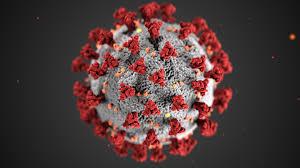
The COVID-19 pandemic, which is caused by a coronavirus called SARS-CoV-2, has killed more than 300,000 worldwide and completely disrupted normal life on most of the planet. Politicians would have us believe that it is an unprecedented, unanticipated, unpredictable bolt from the blue. Not true. The warning signs were ignored, and we were ill-prepared.
A review article in the American Society for Microbiology's publication, Clinical Microbiology Reviews, entitled, "Severe Acute Respiratory Syndrome Coronavirus as an Agent of Emerging and Reemerging Infection," concluded:
- Coronaviruses are well known to undergo genetic recombination, which may lead to new genotypes and outbreaks. The presence of a large reservoir of SARS-CoV-like viruses in horseshoe bats, together with the culture of eating exotic mammals in southern China, is a time bomb. The possibility of the reemergence of SARS and other novel viruses from animals or laboratories and therefore the need for preparedness should not be ignored.
That review was published in 2007. (Yes – 13 years ago.)
The article praised the amount of research that had been performed rapidly in response to the 2002-2003 SARS outbreak but observed that much more was essential because gaps still exist in terms of the molecular basis of the physical stability and transmissibility of this virus, the molecular and immunological basis of disease pathogenesis in humans, screening tests for early or cryptic SARS cases, foolproof infection control procedures for patient care, effective antivirals or antiviral combinations, the usefulness of immunomodulatory agents for late presenters, an effective vaccine with no immune enhancement, and the immediate animal host that transmitted the virus to caged civets in the market at the beginning of the epidemic.
To anyone who is closely following those aspects of the current coronavirus pandemic, it's obvious that the same gaps remain 13 years later. The reason is that the research community hasn't intensively studied those issues. What it has done, however, since 2007 is fritter away a sizable chunk of the United States' research funding on senseless boutique projects of special interests.
Let me explain.
Research is the lifeblood of technological innovation, which, in turn, drives economic growth and keeps America prosperous and competitive. Government-funded scientific research runs the gamut from studies of basic physical and biological processes to the development of applications to meet immediate needs.
A good example of important medical research that the private sector is unlikely to perform is the recent, federally funded ISCHEMIA study of patients with coronary artery disease. It found that invasive procedures to unclog blocked arteries — such as the insertion of a stent (a tiny mesh tube that props open a blood vessel after artery-clearing angioplasty) — offered no benefit compared to medicines alone in people without chest pain. They were also no better in a composite of major heart-disease outcomes, including cardiac death, heart attacks, heart-related hospitalizations, and resuscitation after cardiac arrest. The study, which enrolled more than 5,000 patients and cost about $100 million, provides an important guide to cost-effective treatment of coronary artery disease.
Basic science, which elucidates the fundamental processes in fields such as aging, cancer biology, immunology, and virology, is also worthy of federal research funding. However, the definition of what constitutes "science" has gradually expanded to include sociology, economics, and woo-woo "alternative medicine." Much of the spending on these disciplines by the nation's two major funders of non-military research, the National Science Foundation and the National Institutes of Health – whose budgets for this fiscal year total more than $50 billion – shortchanges taxpayers.
The NSF, whose mission is to ensure U.S. leadership in areas of science and technology that are essential to economic growth and national security, frequently funds politically correct but low-value research projects. A few doozies include the veiling-fashion industry in Turkey, Viking textiles in Iceland, the "social impacts" of tourism in the northern tip of Norway, and whether hunger causes couples to fight (using the number of pins stuck in voodoo dolls as a measure of aggressive feelings).
I once suffered through a presentation about an NSF-funded study of the ethics of nanotechnology research (a technology that deals with dimensions on the scale of less than 100 nanometers, the goal of which is to control individual atoms and molecules). The investigator conducted interviews with nanotechnology researchers in their offices, and part of her "research methodology" involved recording what kind of screen savers were on their computers. The study concluded:
"Narrative is an indispensable device for formulation of theory about scientists [sic] perspectives regarding the moral and social implications of nanotechnology," and "alternative pedagogies are necessary to fully explore and develop a working ethical framework for analysis of nanotechnology."
Sounds as though the study was of nano-value to society,
Research funding in the geosciences, including climate change, is certainly legitimate, but not when it goes to ludicrous boondoggles such as a climate-change musical that cost $697,177 to produce.
The primary culprit is the NSF's Directorate for Social, Behavioral, and Economic Sciences. Underlying its ability to dispense grants is the wrongheaded notion that social-science projects such as a study of animal depictions in National Geographic and a climate change musical are as important as research to identify early markers for Alzheimer's disease or pancreatic cancer – or the biology and epidemiology of coronaviruses. This is what happens when, as a former senior NSF official put it, "the inmates run the asylum."
As for the NIH, most of its budget – currently about $44 billion – goes to fund grant proposals from researchers at institutions nationwide. The proposals are not judged by their merits across all disciplines, but are divided by categories of research – cancer, aging, eye, etc. But one institute that was the brainchild of politicians – The National Center for Complementary and Integrative Health (formerly the National Center for Complementary and Alternative Medicine), funds, on average, far less-significant work than the others, yet receives significant resources.
NCCIH's stated mission is "to define, through rigorous scientific investigation, the usefulness and safety of complementary and integrative health interventions and their roles in improving health and health care." But "complementary and integrative" often means implausible and poorly designed, because peer review at this institute is performed by researchers in this field who permit the funding of such projects. (Again, the inmates are running the asylum.)
One study supported by the center found that cranberry juice cocktail was no better than a placebo at preventing recurring urinary-tract infections. Other supported studies include "Long-Term Chamomile Therapy of Generalized Anxiety Disorder," "The Use of Narrative in Public Health Research and Practice" and "Restorative Yoga for Therapy of the Metabolic Syndrome."
The more credible studies in research fields funded by NCCIH could be administered more effectively by other NIH components, such as the National Institute of Neurological Diseases and Stroke or the National Institute of Mental Health, where they would be more rigorously peer-reviewed.
In 2018, NIH could afford to fund only about 21% of the investigator-initiated research grant proposals it received. That NCCIH was given $151.9 million in the last fiscal year, the most ever, is an affront to the NIH-funded researchers who are at the cutting edge of their disciplines and face increasing difficulty getting federal funding for studies that rank high on scientific merit.
Would an additional billion dollars or so diverted from NCCIH to the National Institute of Allergy and Infectious Diseases (headed, by the way, by Dr. Anthony Fauci, the star of the nation's coronavirus task force) and additional funds from NSF have made an appreciable difference in what we know about coronaviruses? Who knows? But in any case, it would have been more responsible and constructive public policy.
Miller, a physician and molecular biologist, is a senior fellow at the Pacific Research Institute. He was a research fellow at the NIH and the founding director of the FDA's Office of Biotechnology.



